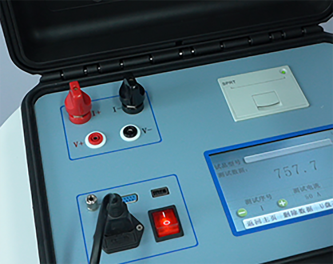 English
English


Understanding Hipot Wire Testing Procedures and Safety Measures in Electrical Applications
Understanding HIPOT Wire Testing Ensuring Safety and Compliance
In today's high-tech world, the safety and reliability of electrical devices is paramount. One crucial aspect of ensuring this safety is the process of HIPOT testing, also known as High Potential testing. This procedure is fundamental in the electrical and electronics industries, where it is vital to confirm that insulated wires and components can withstand elevated voltage levels without breaking down. In this article, we will delve into the importance of HIPOT wire testing, its procedures, and its role in maintaining safety standards in various applications.
What is HIPOT Testing?
HIPOT testing involves applying a high voltage between the conductive parts of a component or system and its insulating material. The primary aim is to detect insulation failures, which can lead to dangerous electrical leaks or short circuits. By exposing the material to a voltage much higher than its normal operating conditions, technicians can identify weaknesses in the insulation that may not be apparent under standard testing methods.
The Importance of HIPOT Testing
One of the main reasons for conducting HIPOT wire testing is to ensure compliance with safety standards set by national and international regulatory bodies. Regulations such as the Underwriters Laboratories (UL) standards, the International Electrotechnical Commission (IEC) guidelines, and others lay down specific requirements for electrical devices, mandating that manufacturers perform these tests prior to getting their products to market.
In addition to regulatory compliance, HIPOT testing plays a vital role in maintaining product reliability and safety. Electrical failures can lead to catastrophic results, including fires, equipment damage, and even loss of life. By identifying potential insulation failures during the manufacturing process, companies can mitigate risks, enhance product quality, and ultimately protect their customers.
The HIPOT Testing Process
The HIPOT testing process typically consists of several steps
hipot wire testing

1. Preparation Before testing, ensure that the equipment is disconnected from any power source. Additionally, remove any components or devices that could interfere with the test, such as sensitive electronics that are not rated for high voltages.
2. Setup Connect the HIPOT tester leads to the appropriate conductive parts of the wire or component being tested. The setup depends on whether you are testing a wire or an entire device assembly.
3. Specify Test Parameters Set the desired test voltage and duration on the HIPOT tester. Testing voltages are usually specified by regulatory standards or manufacturer guidelines. Common test voltages range from 500V to 5000V, depending on the application.
4. Conduct the Test Initiate the test. The tester will apply the designated voltage and monitor the insulation's integrity. During this phase, the tester analyzes whether any breakdown occurs, which would indicate a failure of the insulation.
5. Evaluate Results After the designated test duration, the HIPOT tester will provide a pass/fail indication. If the insulation withstands the test voltage without breaking down, it passes. Any leakage current beyond acceptable limits indicates a failure, prompting further investigation.
6. Documentation Record the test results for quality assurance and compliance documentation. Proper record-keeping is essential for audits and demonstrates adherence to safety standards.
Conclusion
HIPOT wire testing is an essential procedure in the electrical and electronics manufacturing industry. It provides a reliable method for ensuring that insulation materials can withstand high voltage and that electrical devices are compliant with industry safety standards. With the constant evolution of technology and increasing demand for efficiency and safety, the importance of such testing practices will only grow in the future. Manufacturers must not overlook HIPOT testing in their production processes to safeguard their products and protect consumers from electrical failures. By embracing comprehensive testing standards, the industry can continue to innovate while ensuring the highest levels of safety and reliability.
-
Differences between open cup flash point tester and closed cup flash point testerNewsOct.31,2024
-
The Reliable Load Tap ChangerNewsOct.23,2024
-
The Essential Guide to Hipot TestersNewsOct.23,2024
-
The Digital Insulation TesterNewsOct.23,2024
-
The Best Earth Loop Impedance Tester for SaleNewsOct.23,2024
-
Tan Delta Tester--The Essential Tool for Electrical Insulation TestingNewsOct.23,2024





